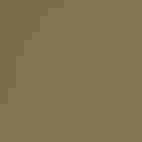American Pipit
At a Glance
Nesting in the far north and on mountaintops, American Pipits can be found throughout the continent during migration or winter. At those seasons they are usually in flocks, walking on shores or plowed fields, wagging their tails as they go. Often they are detected first as they fly over high, giving sharp pi-pit calls.
All bird guide text and rangemaps adapted from Lives of North American Birds by Kenn Kaufman© 1996, used by permission of Houghton Mifflin Harcourt Publishing Company. All rights reserved.
Category
Perching Birds, Wagtails and Pipits
IUCN Status
Least Concern
Habitat
Coasts and Shorelines, Fields, Meadows, and Grasslands, High Mountains, Lakes, Ponds, and Rivers, Saltwater Wetlands, Tundra and Boreal Habitats
Region
Alaska and The North, California, Eastern Canada, Florida, Great Lakes, Mid Atlantic, New England, Northwest, Plains, Rocky Mountains, Southeast, Southwest, Texas, Western Canada
Behavior
Undulating
Population
20.000.000
Range & Identification
Migration & Range Maps
Migrates in flocks, apparently traveling mostly by day.
Description
6-7" (15-18 cm). Gray-brown above, whitish to buff below, with streaked chest. In summer, richer pinkish buff below with fainter streaks. Narrow white outer edge on tail; legs usually blackish. Note tail-bobbing behavior, sharp callnotes in flight.
Size
About the size of a Robin, About the size of a Sparrow
Color
Black, Brown, Red, Tan, White
Wing Shape
Pointed
Tail Shape
Rounded, Square-tipped
Songs and Calls
Flight song a weak and tinkling trill; call a paired, high-pitched pip-pip.
Call Pattern
Falling, Flat, Rising
Call Type
Chirp/Chip, Hi, Whistle
Habitat
Tundra, alpine slopes; in migration and winter, plains, bare fields, shores. Breeds on tundra, both in far north and in high mountains above treeline, in areas with very low growth such as sedges, grass, and dwarf willows. In migration and winter found on flat open ground such as plowed fields, short-grass prairie, mudflats, shores, river sandbars.
Sign up for Audubon's newsletter to learn more about birds like the American Pipit
Behavior
Eggs
4-6, sometimes 3-7. Whitish to pale buff, heavily spotted with brown and gray. Incubation is by female only, 13-16 days. Male feeds female during incubation period.
Young
Both parents feed nestlings. Female broods young much of the time during first few days; male may bring food for her and for young. Young usually leave nest at about 14 days, are fed by parents for about another 2 weeks.
Feeding Behavior
Forages by walking on the ground, taking insects from the ground or from low plants. Sometimes forages while walking in very shallow water. Except in the breeding season, usually forages in flocks.
Diet
Mostly insects, also some seeds. Insects make up great majority of summer diet; included are many flies, true bugs, beetles, caterpillars, moths, and others. Also eats some spiders, millipedes, ticks. Migrants along coast may eat tiny crustaceans and marine worms. Inland in fall and winter, seeds of grasses and weeds may make up close to half of diet.
Nesting
Male performs song-flight display to defend nesting territory and attract a mate. In display, male begins singing on ground, flies up (often to 100' or more), then glides or parachutes down again with wings fully opened, singing all the way. Nest site is on ground in sheltered spot, usually protected under overhanging grass, small rock ledge, or piece of sod. Nest (built by female only) is a cup of grass, sedges, and weeds, lined with finer grass and sometimes with animal hair or feathers.
Conservation
Conservation Status
Some analyses of Christmas Bird Counts have suggested declining numbers; however, species is still widespread and common.
Climate Threats Facing the American Pipit
Choose a temperature scenario below to see which threats will affect this species as warming increases. The same climate change-driven threats that put birds at risk will affect other wildlife and people, too.




